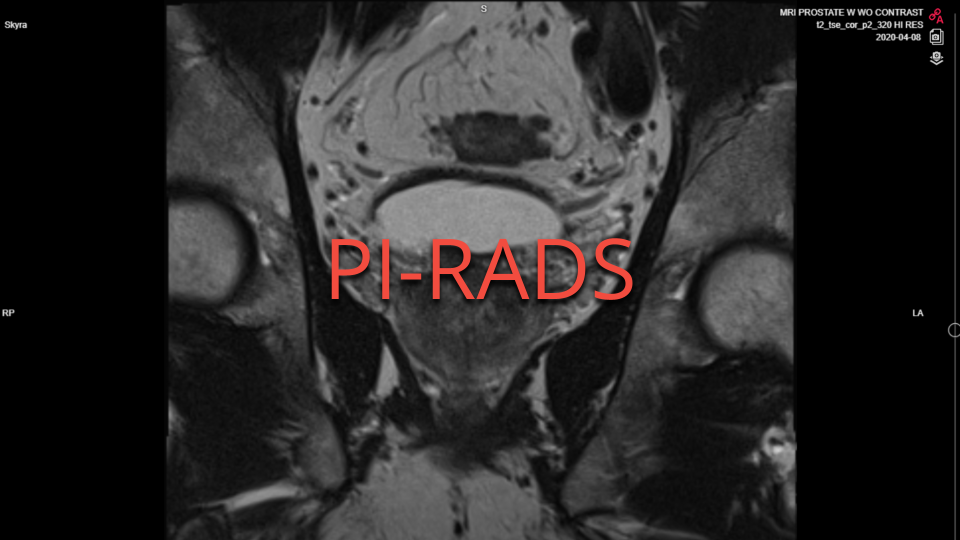PI-RADS in Medical Research: Advancing Prostate Cancer Imaging Through Clinical Trials

PI-RADS (Prostate Imaging-Reporting and Data System) is a standardized scoring system for prostate MRI that has transformed clinical trials through consistent assessment methods. With proven sensitivity of 86.2% and specificity of 84.7% at PI-RADS score ≥ 4, it enables reliable multi-center research and improved patient stratification in clinical trials.
Evolution of PI-RADS in Medical Imaging
The standardization of prostate imaging has undergone significant evolution since its inception. This journey reflects the collaborative effort of radiologists, researchers, and clinicians worldwide to create a unified approach to prostate cancer detection. The system's development has been marked by continuous refinement based on clinical evidence and research outcomes.
A comprehensive review in Radiology confirms:
"PI-RADS has evolved through systematic updates, from its introduction in 2012 to version 2.0 in 2015, and the current version 2.1 released in 2019."
Also Read: BI-RADS in Medical Imaging Research: Standardizing Breast Cancer Detection and Clinical Trials
The Impact on Clinical Research
Clinical trials utilizing PI-RADS have demonstrated remarkable consistency in cancer detection across different research centers. The system's structured approach has revolutionized how researchers conduct multi-center studies and evaluate treatment outcomes. This standardization has become particularly crucial in comparing results across different institutions and research protocols.
Recent research published in Nature Scientific Reports validates the system's performance:
"At the cutoff PI-RADS score ≥ 4, the sensitivity and specificity were 86.2% and 84.7% respectively, demonstrating robust performance in identifying clinically significant prostate cancer."
Also Read: Understanding Reader Studies in Medical Imaging: A Comprehensive Guide
Advanced Image Analysis with Modern Tools
Modern research platforms have significantly enhanced the application of PI-RADS in clinical trials. These technological advances have streamlined workflow, improved consistency, and enabled more sophisticated data analysis. The integration of artificial intelligence and machine learning has further enhanced the system's utility in research settings.
Pär Kragsterman, CTO of Collective Minds Radiology, emphasizes the importance of standardized imaging in research:
"In our experience supporting numerous clinical trials through Collective Minds Research, PI-RADS has proven invaluable in maintaining consistency across multi-center studies. The standardized approach not only improves the quality of research data but also accelerates the validation of new treatment approaches."
Introduction to Collective Minds Research for Academia
Research Workflow Enhancement
The integration of PI-RADS into modern research platforms has transformed clinical trial workflows through:
- Automated Quality Control
- Real-time validation of imaging protocols
- Standardized data collection forms
- Consistent reporting structures
- Research Collaboration Tools
- Multi-reader study coordination
- Centralized image analysis
- Structured reporting templates
- Data Analytics Integration
- Automated statistical analysis
- Machine learning integration
- Research outcome tracking
Impact on Clinical Trials
Recent studies have demonstrated several key benefits of PI-RADS in clinical trials:
- Patient Stratification
- More accurate risk assessment
- Improved selection criteria for trials
- Enhanced outcome prediction
- Treatment Response Monitoring
- Standardized follow-up protocols
- Consistent response criteria
- Comparable results across sites
- Quality Assurance
- Standardized image acquisition
- Reliable data collection
- Improved inter-reader agreement
Integration with Advanced Research Platforms
Modern research platforms like Collective Minds Research have enhanced PI-RADS implementation through:
- Automated Workflow Management
- Streamlined subject assignment
- Integrated quality control
- Automated data validation
- Advanced Analytics
- Tool assisted image interpretation
- Advanced measurements
- Imaging analysis tools
- Collaboration Features
- Multi-center coordination
- Expert consultation
- Real-time data sharing
Summary
The evolution of PI-RADS and its integration with modern research platforms has revolutionized prostate cancer imaging research. With validated sensitivity of 86.2% and specificity of 84.7% at higher scores, the system provides reliable standardization for clinical trials. As research platforms continue to evolve, PI-RADS remains central to advancing prostate cancer research.

The Collective Minds Research pipeline in action.
FAQ
How accurate is PI-RADS in clinical trials?
Studies show sensitivity of 86.2% and specificity of 84.7% at PI-RADS score ≥ 4, demonstrating high accuracy in detecting clinically significant prostate cancer.
How has PI-RADS evolved over time?
PI-RADS was introduced in 2012, updated to version 2.0 in 2015, and progressed to version 2.1 in 2019, with each update improving standardization and clinical utility.
What role does automation play in PI-RADS research workflows?
Automated tools ensure consistent protocol adherence, standardized reporting, and efficient data collection, reducing human error and improving research quality.
How does PI-RADS benefit multi-center studies?
PI-RADS provides standardized assessment criteria across different institutions, enabling reliable data pooling and comparative analysis.

Reviewed by: Mathias Engström on October 30, 2024




